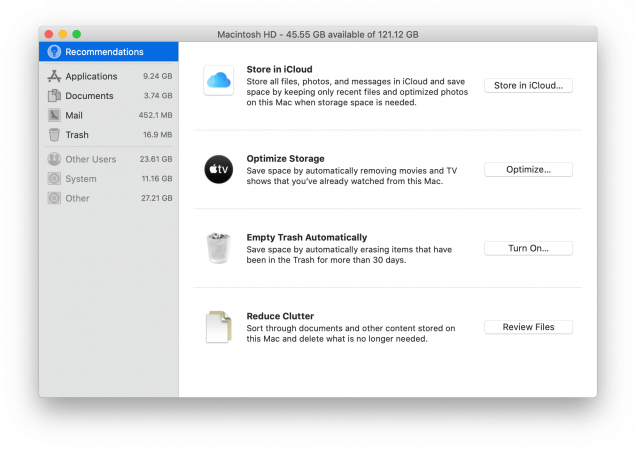
You might find that a big Google Chrome cache or Outlook data files are responsible for the disk space issues, in which case they can be cleared as required. Once DaisyDisk’s scan runs you’ll be presented with a visualisation of where the Mac’s disk space is being used up: There are completely free applications designed for this too, such as Disk Inventory X, however they were built for older versions of macOS so outcomes may vary depending on macOS version. Although not free, there’s a free trial available from the developer’s website which will likely be enough to help narrow down the storage issues you’re having. So if these categories are consuming lots of disk space then third party tools will be required.ĭaisyDisk is a useful and well polished application suited to this task. System and backup files aren’t visible via the macOS storage management tools. Step 3: Download DaisyDisk or another third party application to find other data using lots of disk space This creates an archived copy as per the screenshot below. These can be moved to external storage thereby clearing disk space on your Mac, or alternatively compressed by right-clicking the file in Finder and selecting Compress. The largest files will be at the top so it’s easy to see if they’re large media files which might not be needed anymore. Step 2: Use the storage management tools in macOS to locate and remove large media files you don’t needĬlick the Manage button in the window above and you’ll be able to browse the files on your mac by type (Applications, Documents, Photos etc).

If it’s the System or Backups (such as in the screenshot below) proceed to Step 3.

If it’s Applications, Documents, Movies Music or Photos, proceed to Step 2. Go to the Apple Menu > About This Mac > Storage and see what category is consuming most space. Step 1: Find out which data types are taking up the space on your Mac Is your Mac coming up with a message advising the startup disk is almost full, but you can’t figure out why? In this article we’ll examine how to find the space hogs on a Mac so you can clear the disk space needed.


 0 kommentar(er)
0 kommentar(er)
